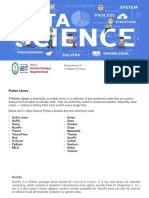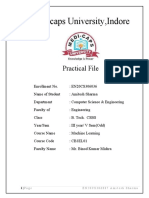0% found this document useful (0 votes)
7 views14 pages3 Python Libraries
Python libraries are collections of pre-written code that assist developers in various tasks such as data analysis, machine learning, and web development. Common libraries include NumPy for numerical computing, Pandas for data manipulation, and TensorFlow for deep learning. Using Python libraries saves time, provides reliable code, and offers community support.
Uploaded by
hrjesgroupCopyright
© © All Rights Reserved
We take content rights seriously. If you suspect this is your content, claim it here.
Available Formats
Download as PPTX, PDF, TXT or read online on Scribd
0% found this document useful (0 votes)
7 views14 pages3 Python Libraries
Python libraries are collections of pre-written code that assist developers in various tasks such as data analysis, machine learning, and web development. Common libraries include NumPy for numerical computing, Pandas for data manipulation, and TensorFlow for deep learning. Using Python libraries saves time, provides reliable code, and offers community support.
Uploaded by
hrjesgroupCopyright
© © All Rights Reserved
We take content rights seriously. If you suspect this is your content, claim it here.
Available Formats
Download as PPTX, PDF, TXT or read online on Scribd
/ 14





































































